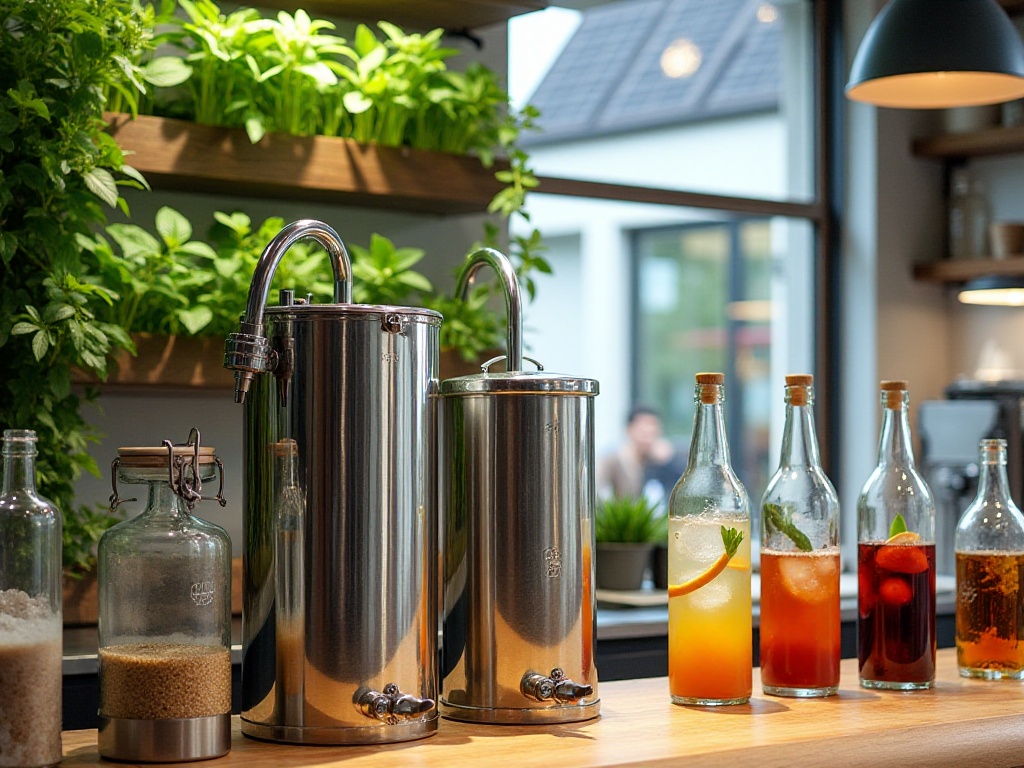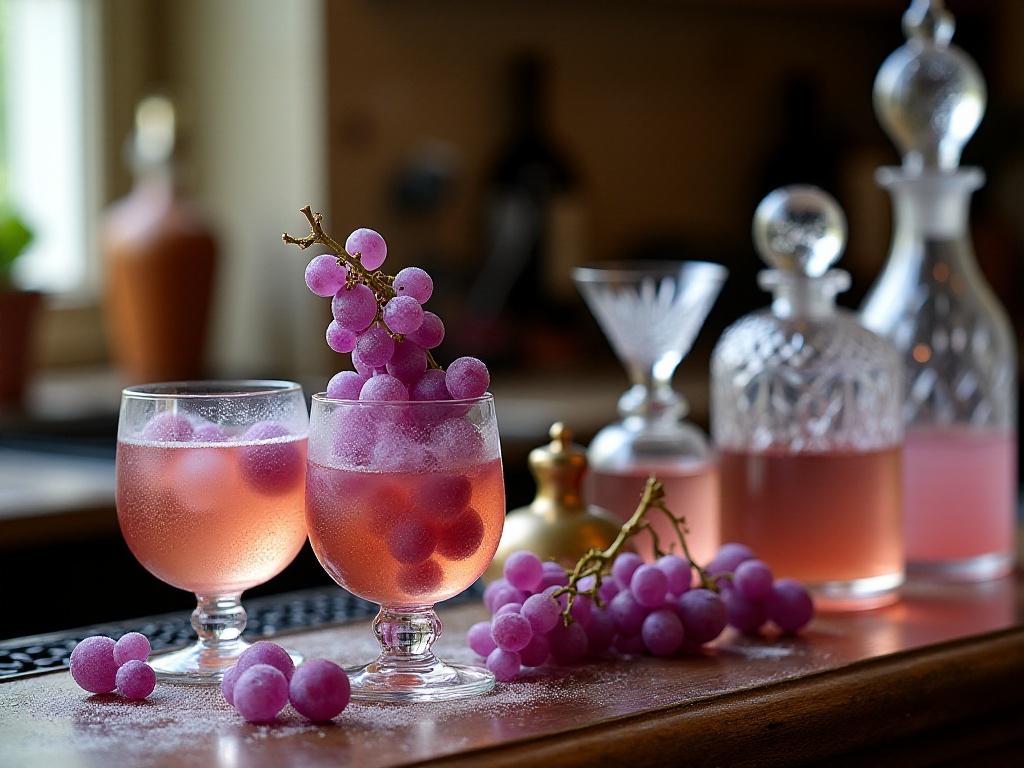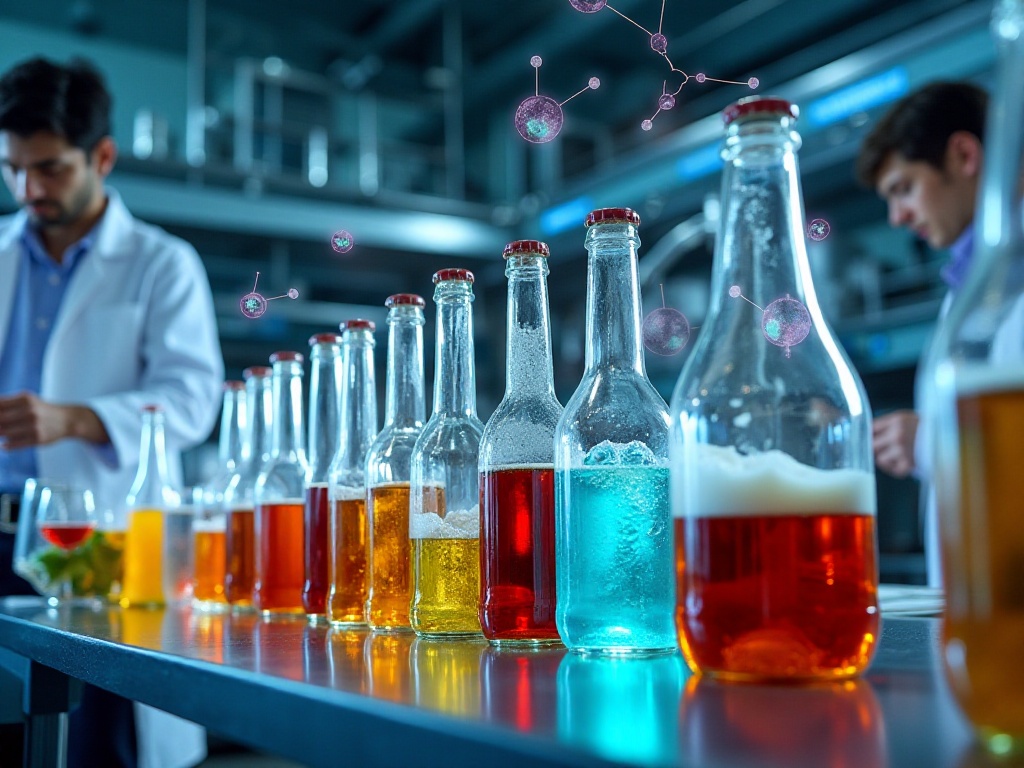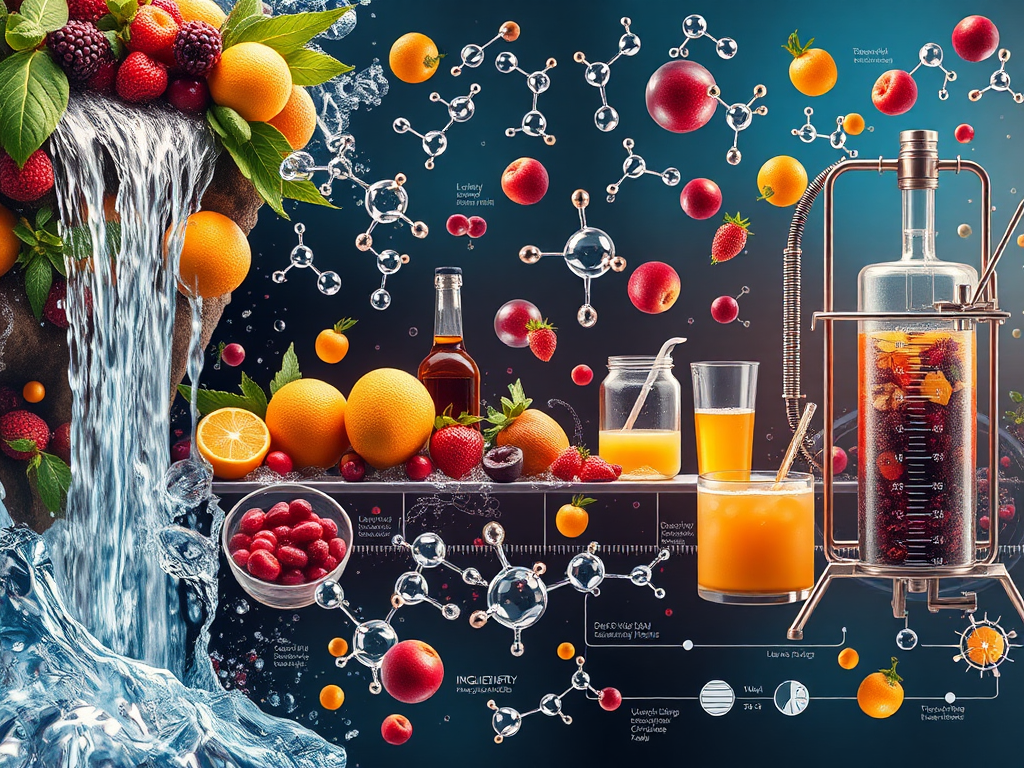The Secret of Ice
On my journey of beverage making, I've discovered that ice is truly magical. When I first started bartending, I thought ice was just frozen water - what's the big deal? Until one time at a high-end bar, when the bartender served me a whiskey with a large ice sphere that truly amazed me.
Large ice cubes are perfect for classic spirit drinks. I remember my first attempt at making large ice spheres at home using silicone molds. Although it took a lot of time to figure out how to make perfectly clear spheres, the sense of achievement when I placed that crystal-clear ice ball in whiskey was indescribable. Large ice cubes melt slowly due to their small surface area relative to volume, maintaining the optimal drinking temperature while preventing over-dilution. I particularly enjoy watching large ice spheres slowly rotate in the liquid, observing them gradually melt as the flavor of the drink evolves over time, making each sip a different experience.
Crushed ice is the perfect companion for summer drinks. Last summer, I hosted a cocktail party at home and specifically bought an ice crusher. Mojitos made with crushed ice were absolutely life-saving - the drinks could be quickly chilled while the rapid melting of crushed ice provided just the right amount of dilution. My friends all said this texture was perfect for beating the heat, and we went through two whole pitchers in one evening. Crushed ice is also particularly suitable for tropical cocktails like Blue Hawaii or Mai Tai, as these drinks need a certain degree of dilution to achieve the best taste.
Nugget ice is even more interesting, with a texture between crushed ice and large cubes, and is standard in many chain coffee shops. I often use nugget ice at home to make various specialty coffees, especially when making layered drinks. The characteristic of nugget ice is that it has a large surface area but doesn't melt as quickly as crushed ice, allowing different layers of ingredients to blend fully without immediately mixing. I love using it to make sea salt caramel lattes - watching the caramel slowly seep into the coffee layer is a visual feast.
Beyond these common ice types, there are some special techniques. Once, I tried freezing coffee into ice cubes to make lattes - as the coffee ice cubes melted, the coffee flavor became increasingly intense, creating rich layers of flavor. Some people like to freeze flower petals or fruit in ice cubes, which not only looks good but also adds subtle fragrances.
Choosing appropriate ice requires considering both the characteristics of the beverage and the drinking scenario. When making juice or carbonated drinks, I choose regular-sized cube ice because these cubes melt at a moderate rate, neither diluting the drink too quickly nor being too slow to maintain the optimal temperature. For outdoor parties, you might need specially made ice with better insulation properties, or simply prepare more regular ice cubes for frequent replenishment.
Efficient Work Methods
When it comes to beverage preparation workflow, I've gathered quite a few practical tips. First is the importance of advance preparation, which I've learned from experience. When I first started making drinks, I would cut fruit as needed, which always left me scrambling, not only reducing efficiency but also making it difficult to maintain consistent taste.
Later, I developed a habit of spending some time every evening preparing for the next day. This includes cutting fresh fruit and storing it in sealed containers, pre-portioning commonly used syrups and other ingredients, and even pre-weighing coffee beans. This way, when I want a specialty coffee the next morning, it only takes a few minutes to prepare. This advance preparation is especially important during busy morning times.
Workstation layout is also crucial. I organize all tools by frequency of use and function. The most commonly used tools, like measuring cups, shakers, and stirrers, are placed within easy reach. Less frequently used special tools are placed slightly further away. This arrangement not only improves work efficiency but also makes the entire workflow look more professional.
Cleaning work seems simple but actually has many aspects to consider. I've developed a habit of "clean as you go" - for example, while waiting for coffee to brew, I clean tools that have already been used. This maintains a clean work environment and prevents flavors from cross-contaminating. Plus, you don't face a pile of tools needing cleaning at the end of work.
Regarding tool management, my experience is that it's worth investing in good storage solutions. I bought a multi-tier storage rack, with different types of tools on different levels. Heavy equipment like blenders and coffee machines go on the bottom, cups and measuring tools in the middle, and light decorative tools on top. This saves space and makes finding things convenient.
Time management is also key to improving efficiency. I divide my day into several periods - mornings mainly for coffee drinks, noon and afternoon for juices and specialty drinks. This avoids frequent tool changes and equipment cleaning, greatly improving work efficiency.
Sometimes you need to prepare multiple drinks simultaneously, which requires careful ordering. I usually start with drinks that need shaking, as these need time to reach optimal taste. Then I prepare simpler drinks, and finally specialty drinks that need decoration. This ensures each drink reaches customers in its best condition.
Unexpected situations are inevitable at work, like surprise visits from friends or urgent recipe adjustments. When the workstation is well-organized and tools are properly arranged, you can handle various situations with ease. Once when friends visited unexpectedly, I could quickly prepare several different style drinks because my workstation was well-organized.

Beverage Development Strategy
In beverage development, I've encountered quite a few challenges. At first, I always thought I could develop an amazing drink in one go, but often spent lots of time and energy with unsatisfactory results. Later I realized that developing new beverages requires systematic planning.
The first step is determining the drink's style positioning, including taste, visual effect, target audience, and other aspects. For example, when developing a summer specialty coffee, I focused particularly on refreshing taste and visual impact. I specifically studied ice-making techniques and even learned about food coloring methods.
Ingredient selection is also crucial. The first time I tried using specialty coffee beans to make drinks, the distinct layers of flavor really opened my eyes. Since then, I've particularly focused on quality when selecting ingredients, preferring to spend more money to ensure quality. Different origin coffee beans, fruit varieties, and tea processing methods all bring completely different flavor experiences.
Equipment selection also needs careful consideration. Initially, to save money, I used cheaper equipment, which often resulted in inconsistent taste. After investing in good coffee machines and blenders, drink quality immediately improved by a level. Although equipment investment costs are high, it's definitely worth it in the long run.
Recording and summarizing are very important in developing new products. I record detailed notes of each attempt's recipe, proportions, temperature, and other details, including both successful and failed experiences. These records not only help with continuous improvement but are also important references for future product development.
Taste testing is another important step. I often invite friends to taste newly developed drinks and listen to their opinions and suggestions. Sometimes what I think is perfect might have room for improvement from others' perspectives. So collecting extensive feedback helps improve drink quality.
Cost control can't be ignored. When developing new products, besides taste and visual effect, you must consider ingredient costs and preparation time. Sometimes you might need to make trade-offs between different ingredients to find the best balance point.

Quality Control
Talking about quality control is an endless topic. I think the most important thing is establishing a complete standard process, with clear standards and inspection items from ingredient procurement to finished product preparation.
Ingredient acceptance is the first checkpoint. Every time I receive new ingredients, I carefully check information like origin, production date, and package integrity. This is especially important for easily spoiled ingredients. For example, checking ripeness and appearance of fresh fruit, and checking roasting dates and storage conditions of coffee beans.
Storage management is also important for quality control. Different ingredients need different storage conditions, so I bought several storage cabinets with different temperatures for different types of ingredients. Coffee beans need light-proof sealed storage, fresh fruit needs temperature and humidity control, and syrups need crystallization prevention.
Temperature control is particularly important during preparation. Different drinks need different preparation temperatures, and slight deviations can affect the final taste. I bought an infrared thermometer specifically for monitoring drink temperatures.
Standardized operating procedures are also key to quality assurance. Each drink has detailed preparation steps and quantity standards that must be strictly followed. For example, when making lattes, the amount of coffee grounds, extraction time, and milk frothing degree all need precise control.
Finished product inspection can't be careless. After each preparation, sensory checks including appearance, aroma, and taste must be conducted. If any problems are found, causes must be identified and improvements made immediately.

Efficiency Improvement Methods
On the path to pursuing efficiency, I've found batch preparation is a very effective method. For example, I prepare a week's worth of syrup at once, so I don't need to make it daily when preparing drinks. However, shelf life must be considered - efficiency shouldn't compromise quality.
Work environment arrangement is also important. I always keep a thermal water pot on my preparation table, which can be used both for drink preparation and hydration. Tool placement must also consider efficiency, with most frequently used tools in the most convenient positions.
Although cleaning work seems simple, it requires method. I categorize cleaning tools and wash them immediately after use, which not only maintains a clean environment but also improves work efficiency. This is especially important for tools that easily retain odors.
On this path of pursuing perfect beverages, every detail matters. Through continuous learning and practice, everyone can make drinks they're satisfied with.








